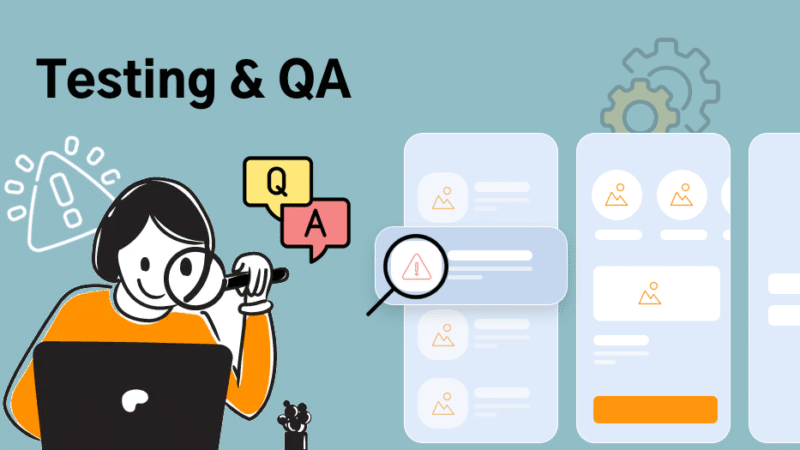Flutter vs React Native: Which is Better for Making Apps?
There are two special tools called Flutter and React Native that help make apps. Let’s learn about them and find out which one is super cool for making apps!
### Flutter: The Magic of Flutter
Flutter is like a magical wand that lets developers create apps that work on both iPhones and Android phones. It’s like making one drawing that magically appears on different kinds of paper! 🎨 Flutter uses a special language called Dart, which is easy for developers to learn. The apps made with Flutter look very beautiful and smooth, just like your favorite movie!
### React Native: The Power of React Native
Now, React Native is another cool tool that helps make apps. It’s like having a big box of building blocks that you can use to create apps for iPhones and Android phones too. React Native uses a language called JavaScript, which many developers already know. It’s like using your favorite LEGO blocks to build something amazing!
### What’s the Difference?
– **Flutter:** It’s really good at making apps that look exactly the same on iPhones and Android phones. Everything looks nice and smooth, just like a storybook!
– **React Native:** It’s great for making apps too, and it uses JavaScript, which is very popular. Apps made with React Native can also look very cool and work well on both kinds of phones.
### Which One is Better?
Flutter and React Native are both popular frameworks for building mobile applications, but they have different underlying principles and structures. Here are some key differences between Flutter and React Native:
- **Programming Language:**
– **Flutter:** Developed by Google, Flutter uses Dart as its programming language. Dart is a statically typed language with a syntax similar to languages like Java or C#.
– **React Native:** Developed by Facebook, React Native uses JavaScript and React, a popular JavaScript library for building user interfaces. JavaScript is widely used and familiar to many web developers. - **Architecture:**
– **Flutter:** Flutter uses a reactive-style architecture. It has its own rendering engine and widgets, which allows for high customization and control over every pixel on the screen.
– **React Native:** React Native uses native components and a JavaScript bridge to communicate with native modules. It follows a bridge-based architecture where JavaScript code runs in a separate thread and interacts with native components through a bridge. - **Performance:**
– **Flutter:** Flutter apps are generally known for their high performance because Flutter compiles Dart code directly to native ARM code (for both iOS and Android). This eliminates the performance overhead associated with JavaScript bridges.
– **React Native:** React Native apps can have slightly lower performance due to the JavaScript bridge that connects JavaScript code with native components. However, performance improvements are constantly being made in React Native. - **UI Components:**
– **Flutter:** Flutter comes with its own set of customizable widgets that are rendered directly on the canvas. This gives developers more control over the look and feel of their applications.
– **React Native:** React Native uses native components provided by the platform (iOS or Android) and wraps them in React components. This means React Native apps can achieve a native look and feel more easily. - **Development Environment:**
– **Flutter:** Flutter has a comprehensive suite of development tools, including a command-line interface, IDE plugins for popular editors like Visual Studio Code and IntelliJ/Android Studio, and a rich set of debugging tools.
– **React Native:** React Native also has good tooling support, with plugins for editors like Visual Studio Code and Atom. It integrates well with the React ecosystem, which includes tools like Redux for state management. - **Popularity and Ecosystem:**
– **Flutter:** Flutter has been gaining popularity rapidly, especially for its ability to create highly customized and performant applications. It has a growing community and a set of packages available through pub.dev.
– **React Native:** React Native has been around longer and has a larger community and ecosystem. It benefits from the popularity of React on the web, which means there are more resources, libraries, and third-party components available.




